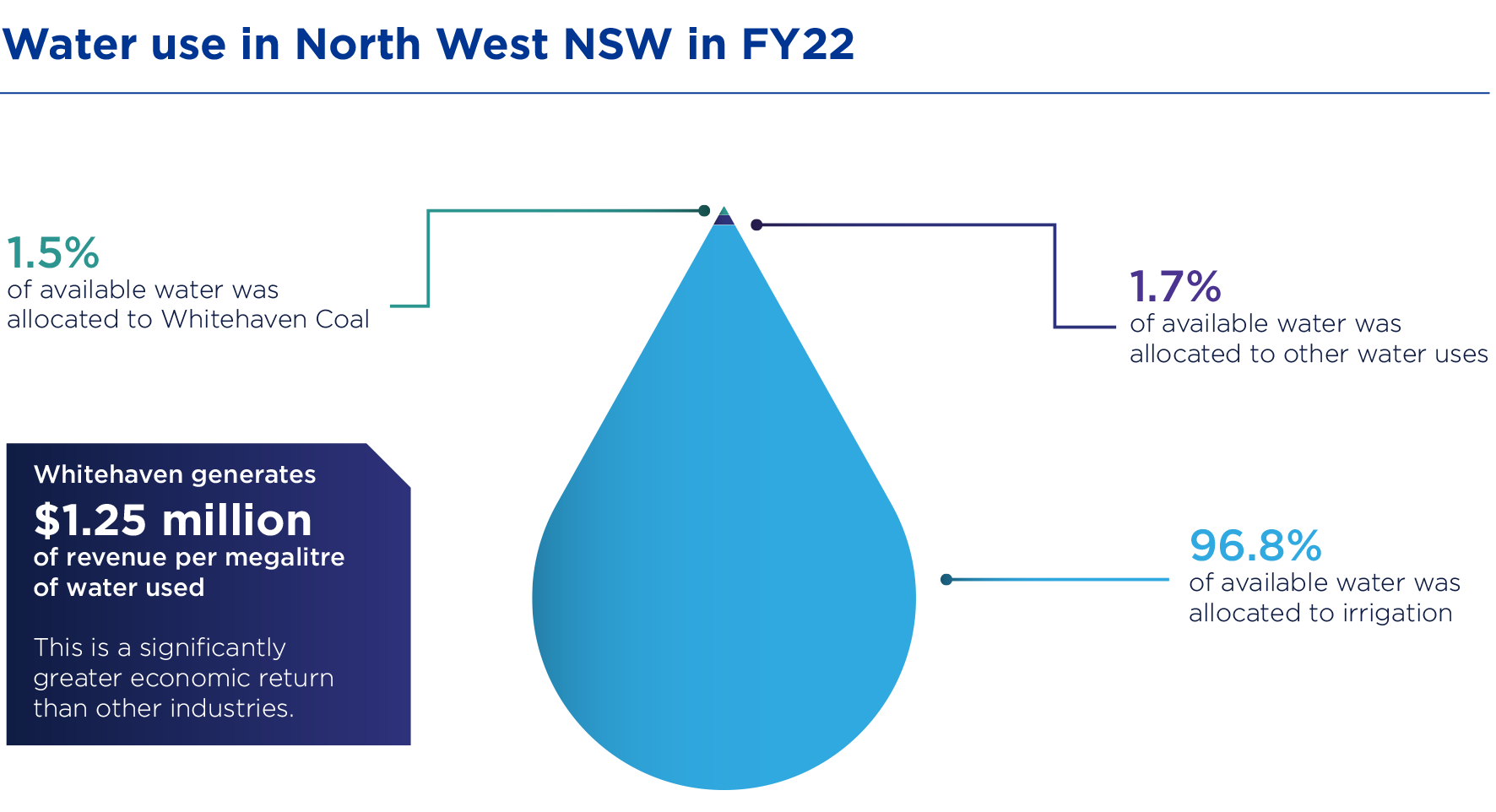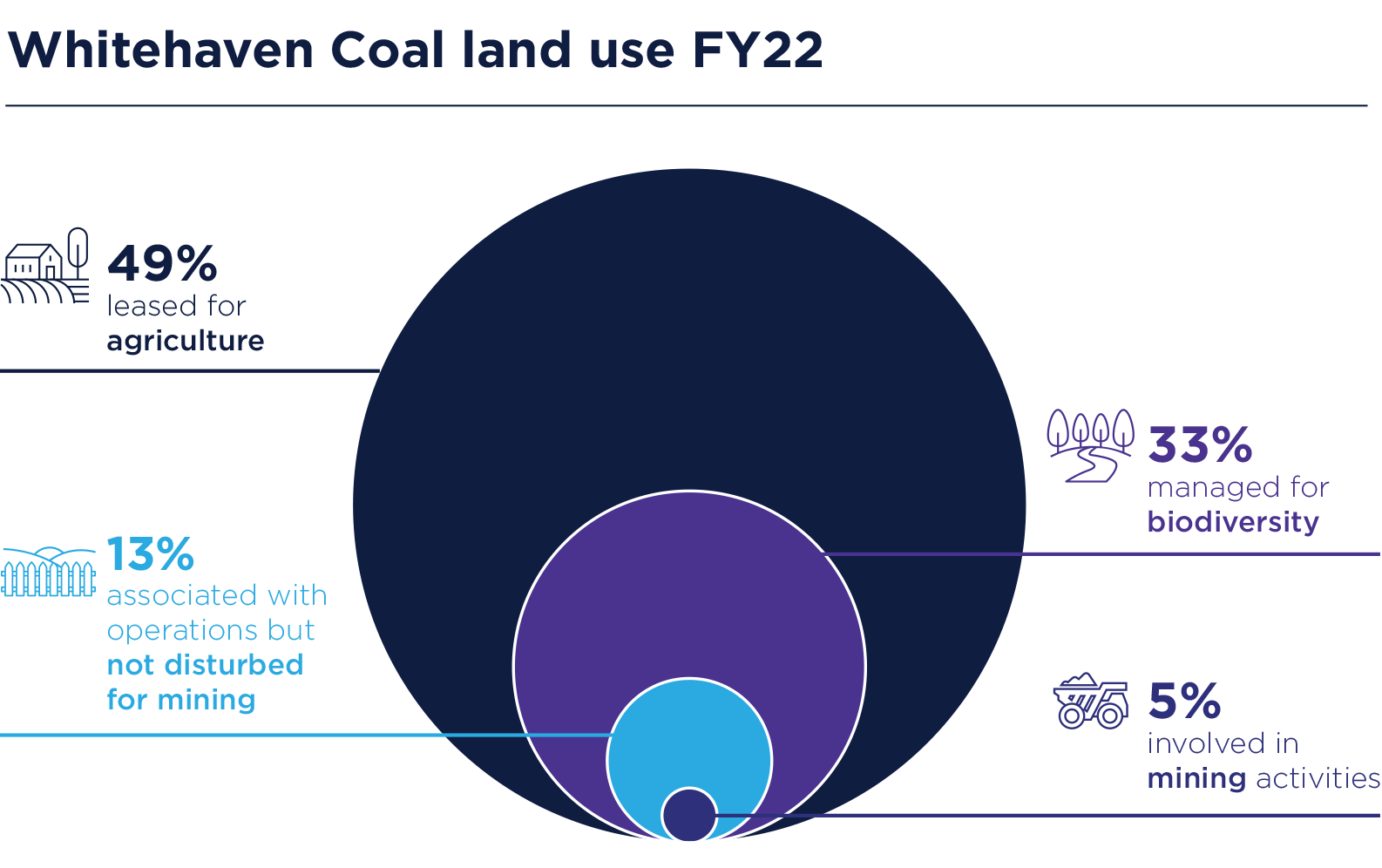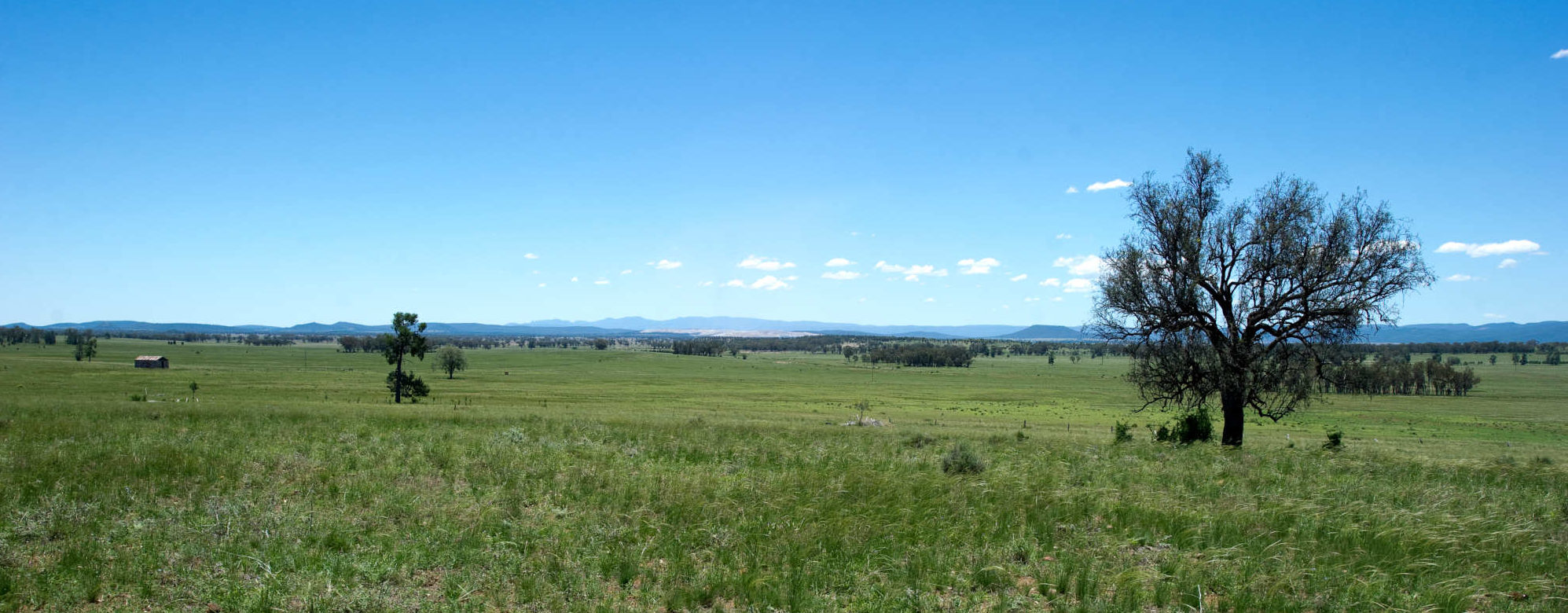We are committed to protecting the environment and minimising adverse impacts from our operations.
Mining is a highly regulated industry and each of our operational sites and development projects must adhere to stringent regulatory requirements and environmental controls as well as our organisation-wide environmental management standards and procedures.
For each stage of a project – from construction and operations to rehabilitation and closure – environmental assessments, environmental management plans and extensive stakeholder consultation are required.
Please refer to our Sustainability Report 2024 for a comprehensive overview of our environmental approach and outcomes in the following key areas:
We operate under stringent noise restrictions set by the NSW Government and manage compliance through Noise Management Plans for each operating site.
We use a range of measures to minimise noise impacts. These include predictive meteorological systems to plan our operations, sound attenuation on mobile equipment and infrastructure, and real-time monitoring, allowing us to adapt our activities.
Water is fundamental to our business and to sustaining our mine operations and the livelihoods that depend on their economic output.
To ensure responsible water management, we have a water strategy in place for all operating mine sites.
In FY22, we implemented significant improvements in the water management systems at our sites, including:
- construction of the Maules Creek clean water diversion dams in accordance with an enforceable undertaking
- upgrades to the mine water system at Tarrawonga including the ability to treat and release dirty water in compliance with the mines EPL
- deployment of additional brine treatment at Narrabri to increase sites water recycling.
During FY22, the Gunnedah region experienced above average rain, including a flooding event in the Namoi River and its tributaries after the wettest November on record.
During wet periods, we employ initiatives that minimise operational impacts while maintaining compliant water management. A series of measures were implemented during wet periods to manage excess water including increased use of dust suppression, irrigation, treatment to discharge and the use of mechanical evaporators.
In FY22, our operations used approximately 2,389 megalitres (ML) of their water allocation licenses. This represents around 20% of our total water allocation licenses.
We look to recycle water wherever we can. For example, in our coal handling and processing plants about 70% of water is recycled.

Whitehaven owns more than 84,000 hectares of land in North West NSW and Queensland. The majority of this land is not involved in mining. In FY22 only 4.7% of land owned was used for mining activities.
Where mining activity intersects with agriculture, we aim to put land to productive use, to ensure non-mining land continues to contribute to a diverse local economy. To that end, almost 42,000 hectares of Whitehaven-owned land is currently being leased for agricultural purposes. This can include licensing to local farmers for productive agricultural activities such as grazing or cropping.
We also have more than 27,000 hectares of land managed as biodiversity offset areas. These areas are established conservation areas to offset impacts that cannot be avoided, managed or mitigated due to the nature of the coal resource. The selection of these offset areas and their incorporation into Whitehaven’s biodiversity estate is based on guidance from independent experts and regulators to ensure they represent like-for-like (or better) biodiversity values than the area impacted by operations.

Rehabilitation is part of the lifecycle of a mine and, as temporary custodians of the land, we take our responsibility to rehabilitate the land seriously.
Plans for rehabilitation form part of the approval process for mining, and rehabilitation takes place progressively throughout the life of a mine and well after it has closed. The objective is to ensure the resulting landform is safe, stable and non-polluting and reflects the surrounding landscape, or improves on it.
During FY22, we undertook significant progressive rehabilitation, including rehabilitating 228 hectares of land formerly used for mining activities and planting over 90,000 trees in rehabilitation areas.
Find out more about how we rehabilitate mined land here.
We generate various types of waste during exploration, construction, operation and closure activities across our mine sites.
Our approach to mineral waste management includes segregation and placement of overburden and coal reject materials in waste emplacements which are designed to be safe, stable and non-polluting.
For general waste, we segregate recyclable materials. Licensed waste contractors collect and process the recyclable waste and dispose of the non-recyclable waste at municipal waste disposal facilities.
We do not own or operate any active tailings dams.
We employ a range of methods to limit our impact on air quality, including using water carts and dust suppressants to minimise dust.
In unfavourable weather conditions, such as excessive winds or dust storms that could increase the prevalence of dust, we modify our onsite activities to minimise dust generation of dust.
We also rehabilitate mined land progressively to minimise areas exposed to dust generation.
All of our operational sites monitor air quality in real-time. Compliance monitoring results are publicly available through the Whitehaven and NSW Environment Protection Authority websites.
We also voluntarily participate in the Namoi Air Quality Monitoring Project. Project monitoring results indicated that, in the absence of dust storms brought on by drought, air quality in the Namoi Valley is among the best in NSW.

 Whitehaven coal
Whitehaven coal
